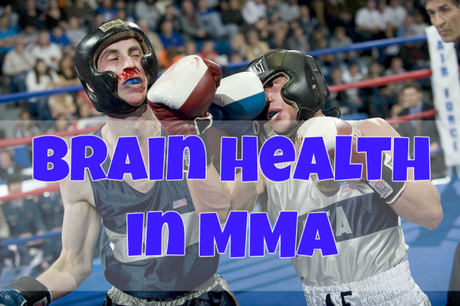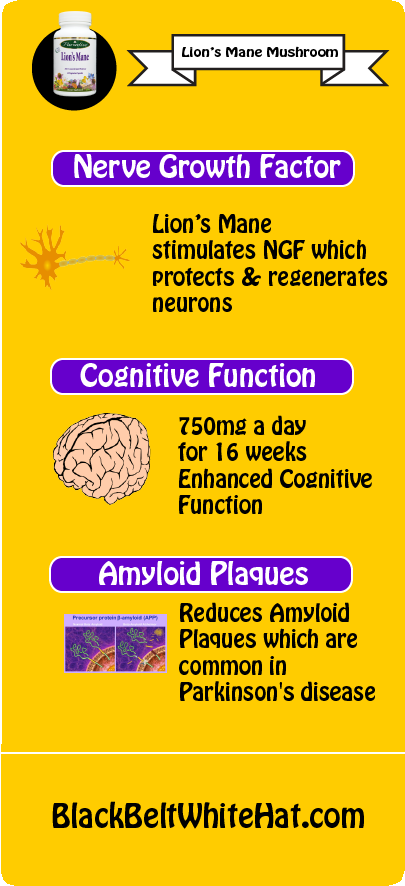
MMA is a new sport, established in the 90s (although Vale Tudo & NHB fighting has been around a lot longer).
It’s still a bit of an unknown, in terms of the long term health implications.
With ex-fighters in their 40s, like Big Daddy Gary Goodridge, developing a range of quite severe brain & mental health problems; if you’re a fighter, you should be doing everything possible to protect your brain from unnecessary damage.
The technical term for being ‘punch drunk’ is – Chronic Traumatic Encephalopathy.
At the Boston University Center for the Study of Traumatic Encephalopathy, where the bulk of the research is being done, they describe CTE as “a progressive degenerative disease of the brain found in athletes (and others) with a history of repetitive brain trauma, including symptomatic concussions as well as asymptomatic subconcussive hits to the head.” The tau protein builds up and disrupts normal brain function, leading to symptoms such as “memory loss, confusion, impaired judgment, impulse control problems, aggression, depression, and, eventually, progressive dementia.”
Can You Grow New Brain Cells?
“Bring me problems, not solutions” I hear you say. And yes, yes you can grow new brain cells, which is good news for anyone competing in a contact sport.
Here’s some foods & supplements that can help you do this:
Lions’ Mane Mushrooms
Mushrooms are amazing. Their consumption either results in some kind of agonising death, or in the case of chaga, reishi, cordyceps & lion’s mane mushrooms – some kind of significant health benefits (except for the white button mushrooms, which are shite, boring & don’t do much).

By increasing the production of nerve growth factor (NGF), lion’s mane results in the formation of new neurons/brain cells.
Research on Lion’s Mane Mushrooms (AKA Hericium erinaceus):
Neurotrophic properties of the Lion’s mane medicinal mushroom, Hericium erinaceus (Higher Basidiomycetes) from Malaysia.
In conclusion, the aqueous extract of H. erinaceus contained neuroactive compounds which induced NGF-synthesis and promoted neurite outgrowth in NG108-15 cells. The extract also enhanced the neurite outgrowth stimulation activity of NGF when applied in combination. The aqueous preparation of H. erinaceus had neurotrophic but not neuroprotective activities.
https://www.ncbi.nlm.nih.gov/pubmed/24266378
Other studies on lion’s mane mushrooms:
https://www.ncbi.nlm.nih.gov/pubmed/28087447
https://www.ncbi.nlm.nih.gov/pmc/articles/PMC4797317/
For MMA fighters and other athletes, it’s also worth being aware that lion’s mane mushroom can enhance the immune system. It also has potent anti-cancer properties.
Incenditally, magic mushrooms (psilocybin mushrooms) can also generate new brain cells (ref) and treat depression (ref).
Huperzine A & NSI-189
Huperzine A and NSI-189 are both proven to increase neurogenesis in the hippocampus – the area of the brain which is related to emotions.
Huperzine A increases the amount of acetylcholine in the brain; which in turn results in the growth of new brain cells. Study here.
You can increase the effect of huperzine A on the brain by taking it with green tea.
NSI-189 is being researched as both an anti-depressant & a cogntive-enhancer – it actually increases the size of the hippocampus in just 28 days of use. It may prove beneficial to victims of stroke (ref) and those with nerve damage.
Royal Jelly & Fish Oil
Like NSI-189, royal jelly may protect the brain, and act as an anti-depressant (ref). A natural supplement (from bees), royal jelly might be a good supplement for those wanting to avoid synthetic supplements like NSI-189.
Nutritionists recommend consuming 2000 mg of royal jelly per day for brain health. It is important that your royal jelly contain at least 6% 10-HDA.
Last but not least – fish oil is also a great supplement for those looking to protect their brain (ref). You can obviously get fish oil from your diet, but avoid farmed fish, especially fish that is smoked – smoked, farmed fish is arguably one of the most toxic foods there is (ref).
Aerobic Exercise & New Brain Cells
Research on animals suggests that sustained, moderate or low intensity aerobic exercise is more effective than high-intensity exercise when it comes to generating new brain cells.
Prevention is Better than Cure
To protect your brain in the first place – Don’t drink alcohol after a fight or sparring session!
When alcohol reaches the brain, it disables function by damaging the connective tissue at the end of neurons (ref). This is the last thing you want after getting punched in the head!
Drink water post fight, and take an anti-inflammatory such as meriva curcumin – as it has potent ‘neuroprotective’ effects (ref).
Avoiding stress is another, potent way to protect the brain. So the Diaz brothers may be on to something – smoking blunts every day!
As well as protecting brain cells, athletes should also look to minimise the formation of amyloid plaques in the brain.
Turmeric, lion’s mane mushrooms, broccoli sprouts, vitamin D, CBD and organic blueberries help to minimise plaque formation.
Conversely, too much iron & copper in the diet, may increase the plaque formation.
Allergy sufferers should look to use quercetin as their anti-histamine, as this has been shown to have neuro-protective properties (ref), as opposed to synthetic anti-histamines which have been linked to a range of brain-degeneration issues & diseases (ref).
Diet & take Supplements at your own risk. For informational purposes only.
And Finally
The hippocampus is the only proven area of the human brain, to be capable of neurogenesis
The Hippocampus is the elongated ridges on the floor of each lateral ventricle of the brain, thought to be the center of emotion, memory, and the autonomic nervous system.
There is growing animal research however, to show that the pre-frontal-cortex section of the brain, may have some restorative properties when NDMA and/or ketamine is consumed.
A neurotrophic hypothesis of depression: role of synaptogenesis in the actions of NMDA receptor antagonists.
Molecular and cellular studies have demonstrated opposing actions of stress and antidepressant treatment on the expression of neurotrophic factors, particularly brain-derived neurotrophic factor, in limbic structures of the brain. These changes in neurotrophic factor expression and function result in structural alterations, including regulation of neurogenesis, dendrite length and spine density in hippocampus and prefrontal cortex (PFC). The deleterious effects of stress could contribute to the reduced volume of these brain regions in depressed patients. Conversely, the actions of antidepressant treatment could be mediated in part by blocking or reversing the atrophy caused by stress and depression. Recent studies have identified a novel, rapid-acting antidepressant, ketamine, in treatment-resistant depressed patients that addresses the limitations of currently available agents (i.e. delayed onset of action and low response rates). We have found that ketamine, an N-methyl-d-aspartate (NMDA) receptor antagonist, causes a rapid induction of synaptogenesis and spine formation in the PFC via stimulation of the mammalian target of the rapamycin signalling pathway and increased synthesis of synaptic proteins. These effects of ketamine rapidly reverse the atrophy of PFC neurons caused by chronic stress and correspond to rapid behavioural actions of ketamine in models of depression. Characterization of a novel signalling pathway also identifies new cellular targets that could result in rapid and efficacious antidepressant actions without the side effects of ketamine.
In very controlled and specific doses however, too much ketamine has been shown in addicts, to literally produce holes in sections of the brain! (ref)

